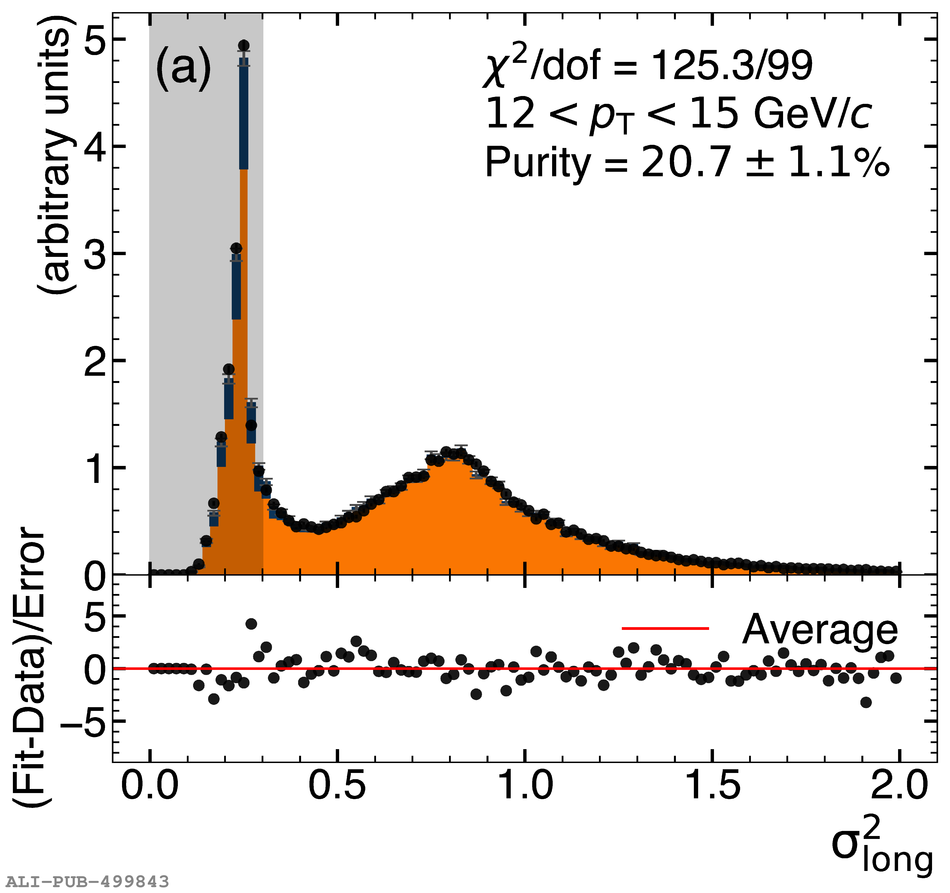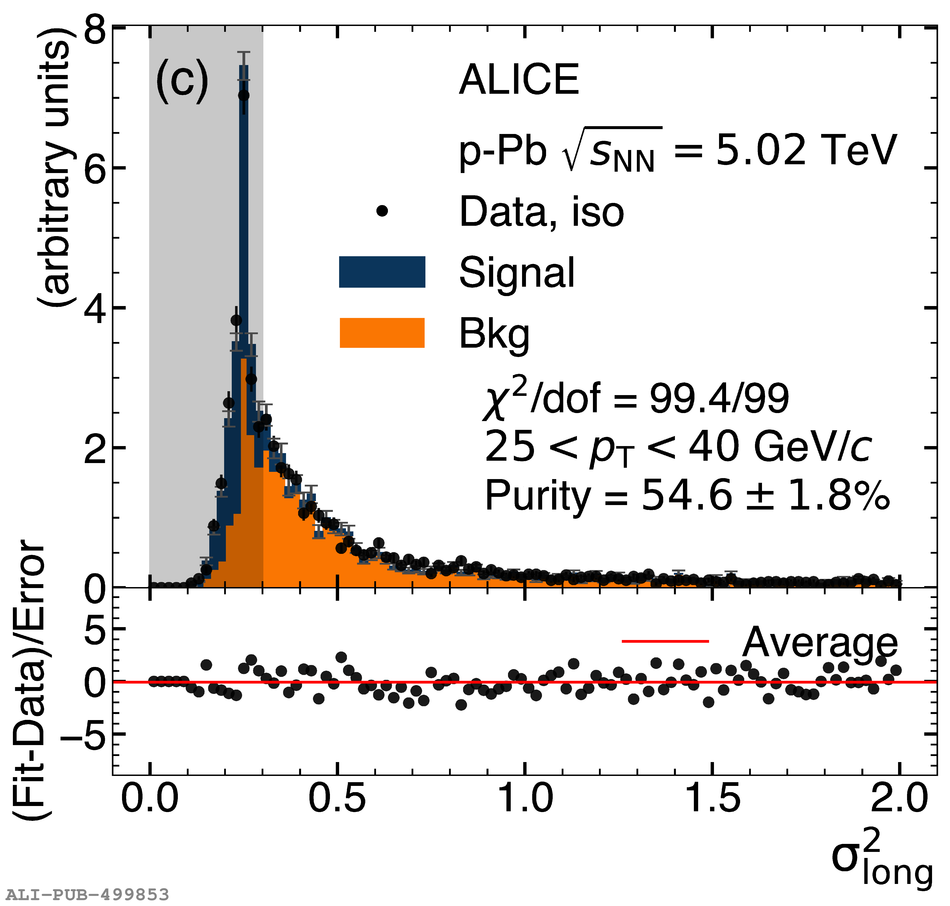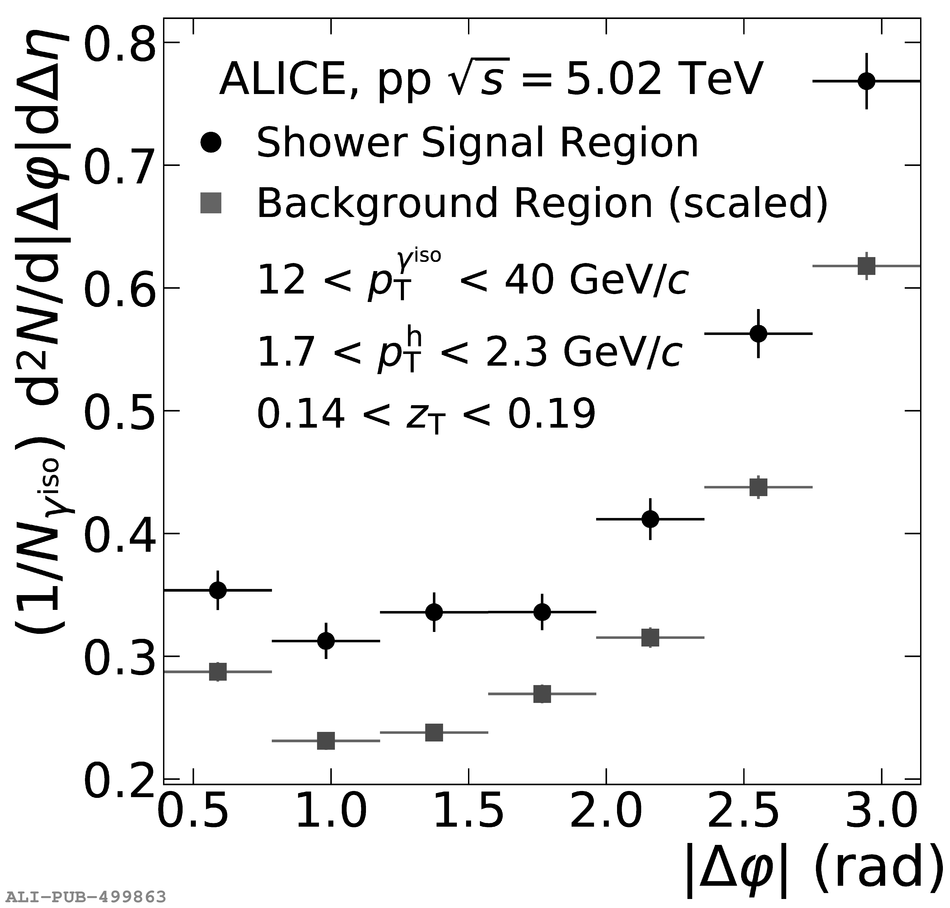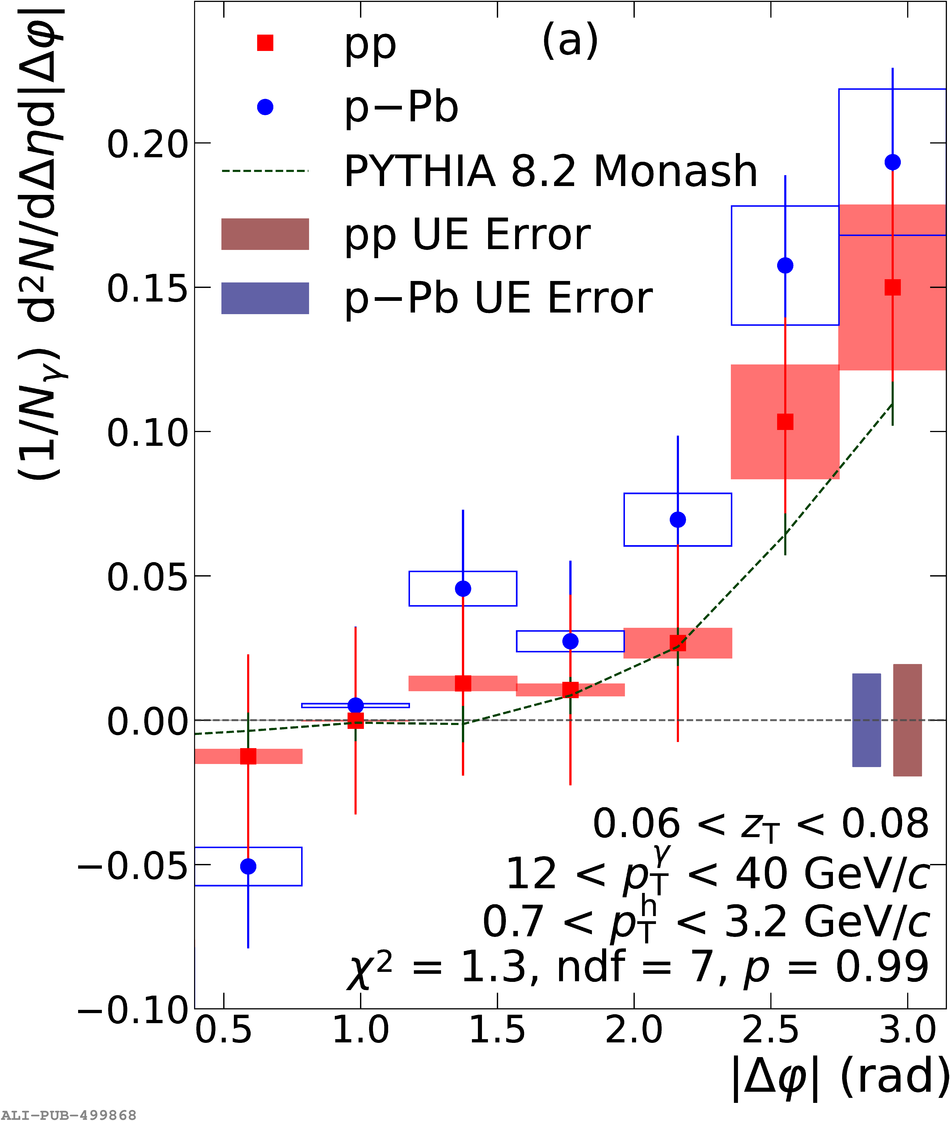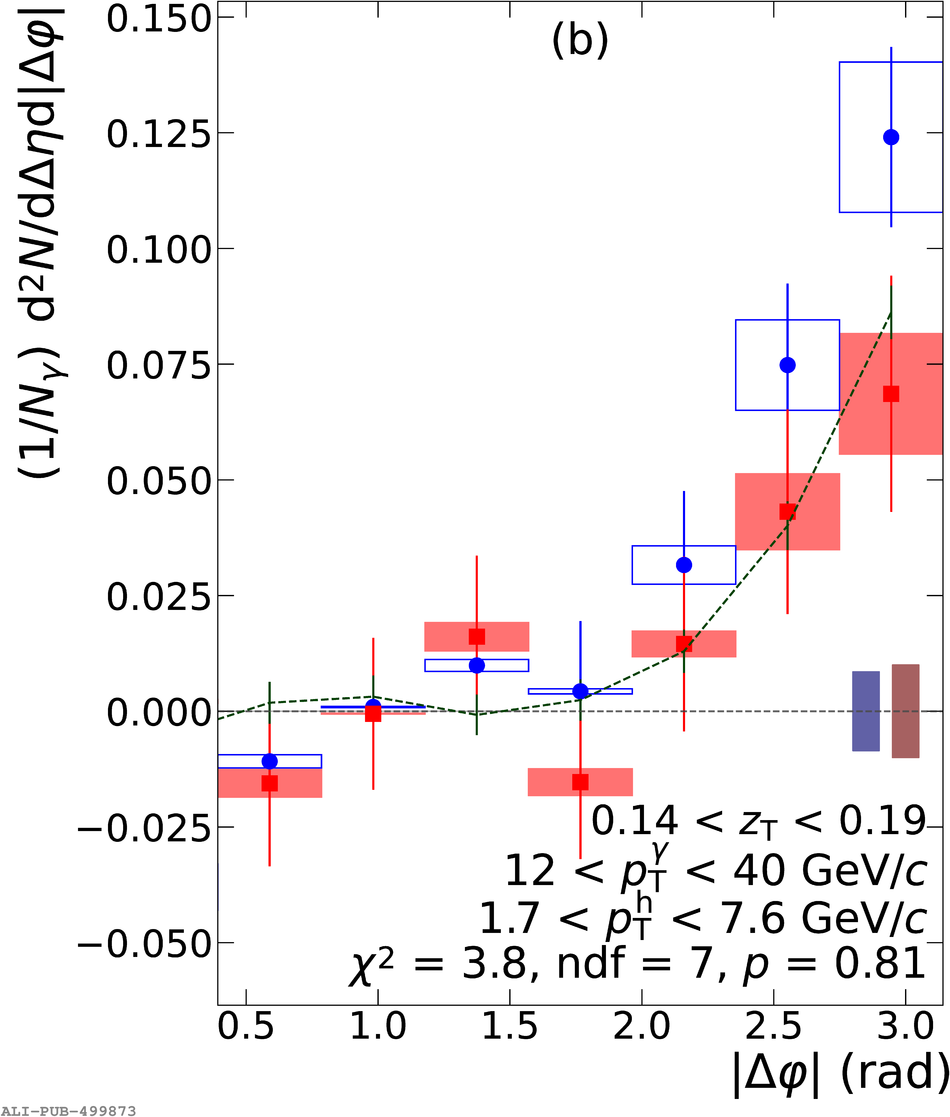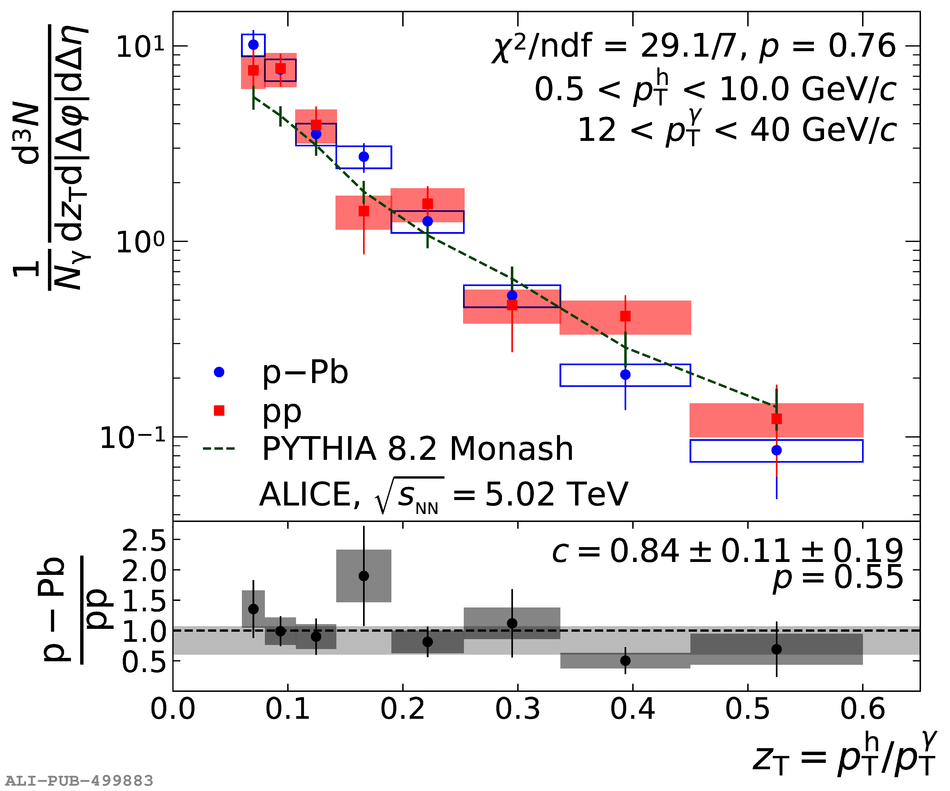This paper presents isolated photon-hadron correlations using pp and p-Pb data collected by the ALICE detector at the LHC. For photons with |$\eta$| <~ 0.67 and 12 <~ $p_{\rm{T}}$ <~ 40 GeV/$c$, the associated yield of charged particles in the range |$\eta$| <~ 0.80 and 0.5 <~ $p_{\rm{T}}$ <~ 10 GeV/$c$ is presented. These momenta are much lower than previous measurements at the LHC. No significant difference between pp and p-Pb is observed, with PYTHIA 8.2 describing both data sets within uncertainties. This measurement constrains nuclear effects on the parton fragmentation in p-Pb collisions, and provides a benchmark for future studies of Pb-Pb collisions.
Phys Rev C 102 (2020) 044908
HEP Data
e-Print: arXiv:2005.14637 | PDF | inSPIRE
CERN-EP-2020-097
Figure group

